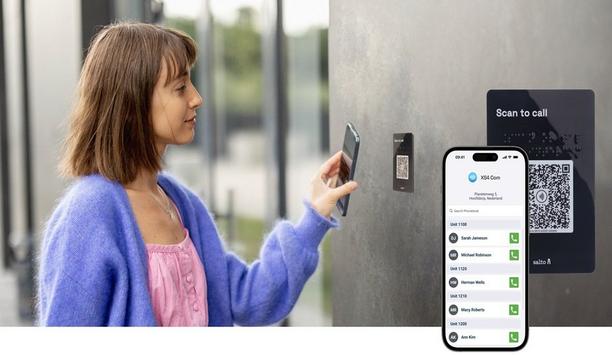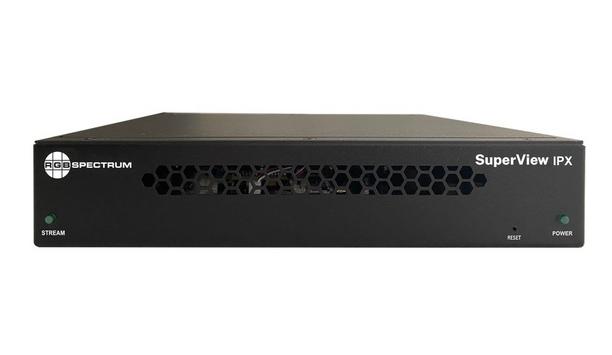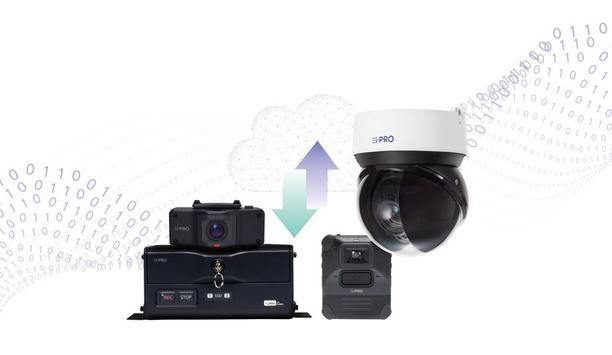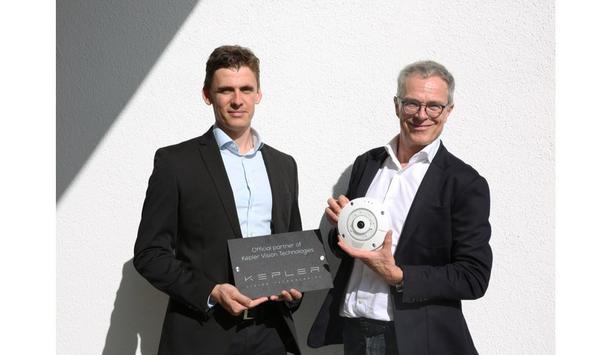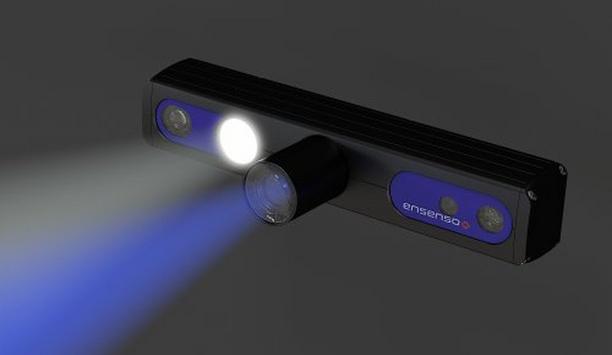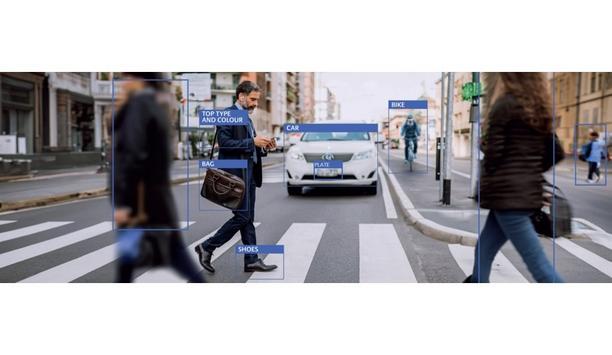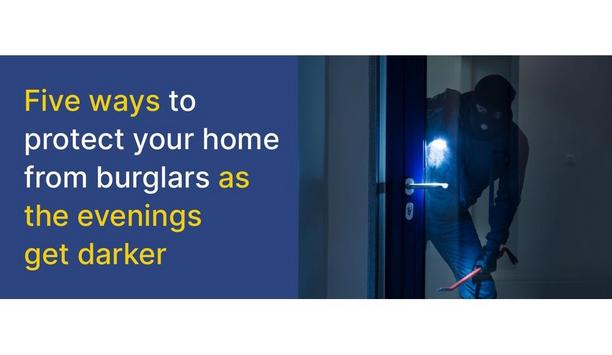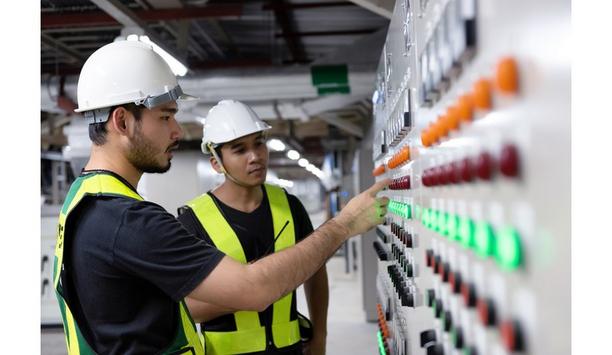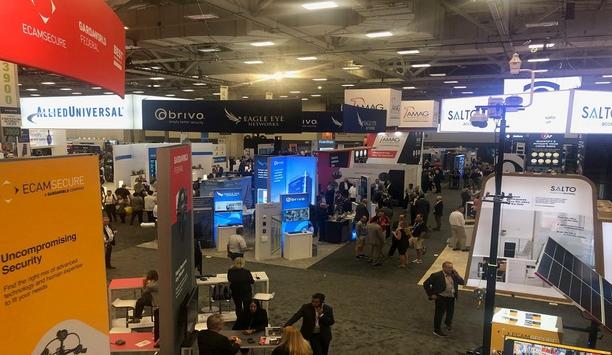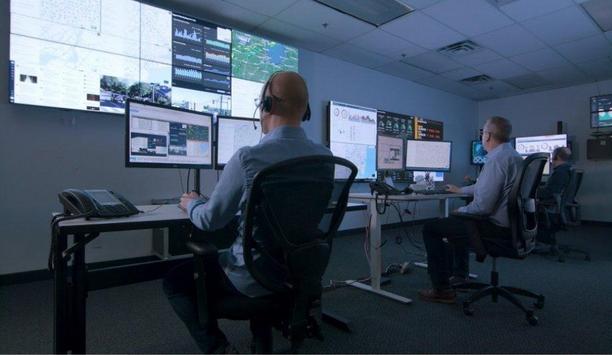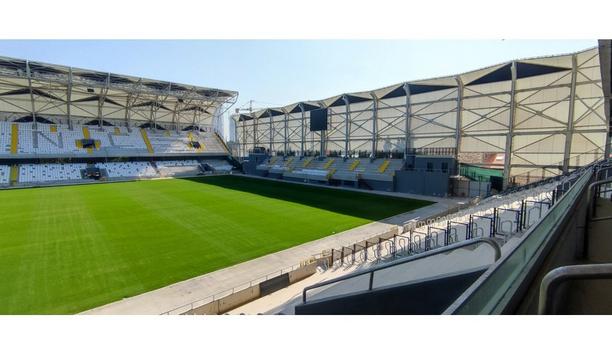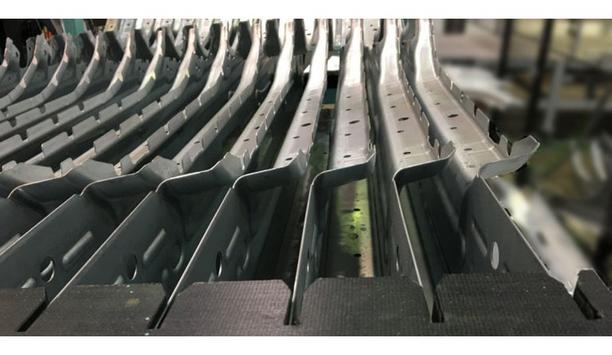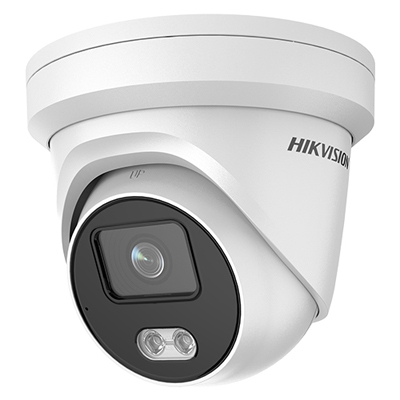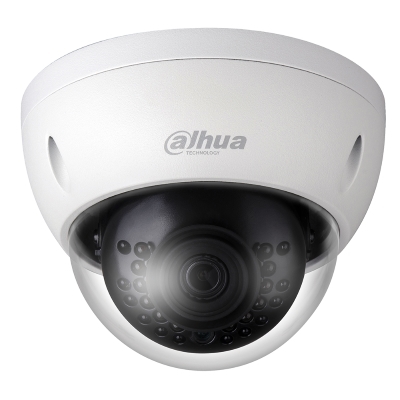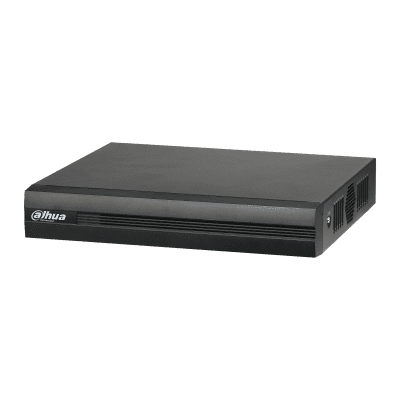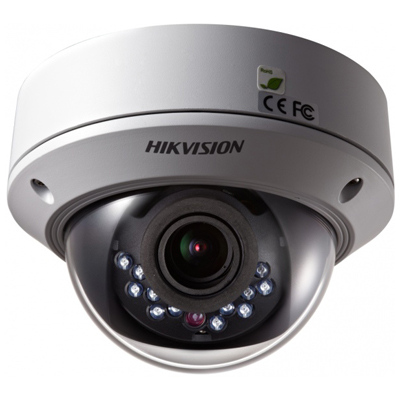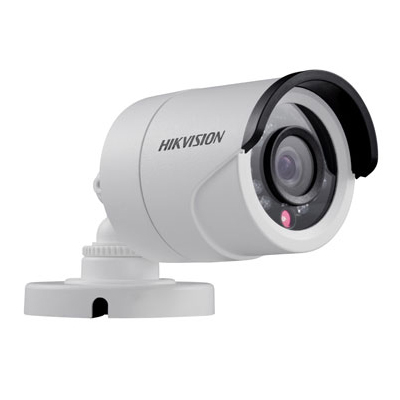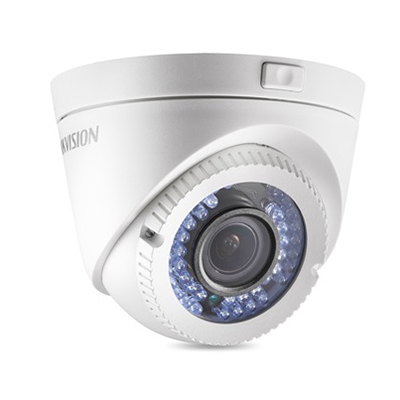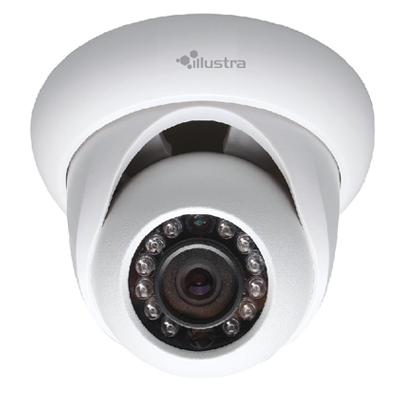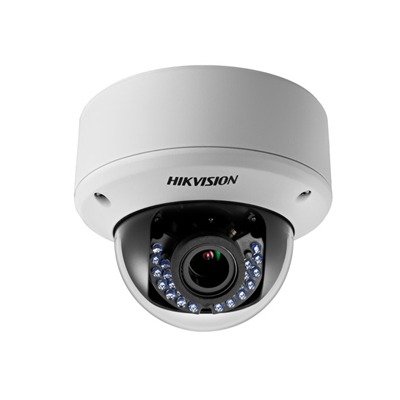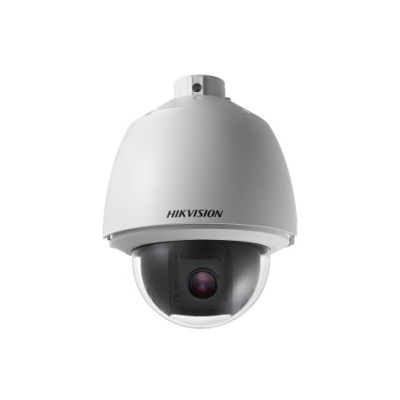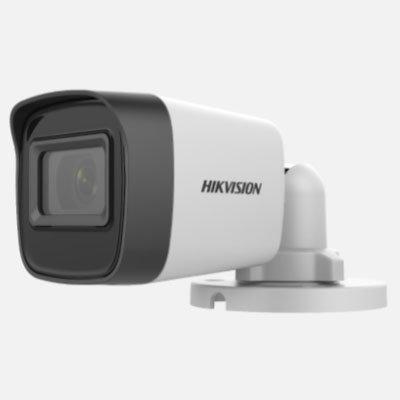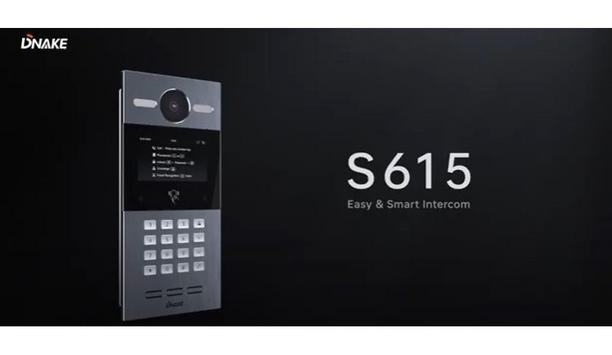Outdoor video surveillance
Salto announces the launch of the XS4 Com iGO cloud-based door intercom, an advanced video intercom solution engineered to seamlessly integrate with modern digital lifestyles across residential, workspace, and commercial environments. XS4 Com iGO represents Salto’s first foray into the smart intercom space, combining innovative technology with the robust access control solutions that Salto is known for. XS4 Com iGO XS4 Com iGO represents a significant advancement in visitor...
Homes without a security system are 300% more likely to be broken into, according to the Pew Research Centre. Despite a decrease in burglary rates, a break-in still occurs every 26 seconds in the US. Zumi’s state-of-the-art gate openers aim to combat this threat, providing robust security solutions that empower customers to protect their families and properties. Zumi incorporates the latest technologies in the design and manufacturing of its products. Zumi gate openers come with an exclus...
As the anticipation builds for the 2024 Paris Olympics, security concerns are heightened. While this long-awaited event will showcase the world’s most accomplished athletes, the safety of all participants and spectators is paramount. Extensive preparations have been underway to achieve this crucial goal. Security challenges The threat landscape in the historical context The security challenges facing the Paris Olympics are underscored by ongoing global conflict, an ever-evolv...
Michele Bennett, General Manager at ADT UK&I Subscriber comments: “Our 2023 burglary report found that most burglaries occur at night, more precisely 37.5% in the evening (7 pm-12 am) and a further 15.5% at night (12 am-6 am). Opportunistic thieves prefer to operate under the cover of darkness. So it’s no surprise that the number of burglaries increases when the clocks go back and the nights get longer.” “Your home is where you feel most secure, yet on...
RGB Spectrum®, an industry pioneer in mission-critical video for real-time decision support, shares new features of its QuadView® IPX and SuperView® IPX multiviewers designed to revolutionise how industries handle data visualisation and decision-making. Multiviewers have become indispensable tools for consolidating diverse data sources onto a single screen, variously used for enhancing situational awareness and improving workflow efficiency. RGB Spectrum's latest offerings increase...
At IACP 2023, on booth 1127, i-PRO Americas Inc., (formerly a division of Panasonic), a pioneer in professional security solutions for surveillance and public safety, will demonstrate its latest range of security solutions for law enforcement professionals. i-PRO’s comprehensive portfolio of public safety and law enforcement solutions includes body-worn cameras, in-vehicle video systems, interview room video solutions, as well as on-premises and cloud-hosted digital evidence man...
News
The cooperation between MOBOTIX AG and Kepler Vision Technologies has brought together two of the world's pioneering IT experts in the healthcare industry. Dutch computer vision and machine learning powerhouse Kepler Vision Technologies combines deep healthcare and nursing-specific expertise with profound artificial intelligence (AI)-based in human activity recognition know-how. MOBOTIX has focused on the healthcare industry for many years and has already implemented numerous projects for hospitals, retirement, and nursing homes. In this context, the optical sensors from MOBOTIX and the solutions developed with them benefit above all from their outstanding data protection and cyber security properties. These competencies are indispensable in the highly personality-sensitive area of healthcare. The two companies launch their first joint solution on the market before the end of this year. Author's quote That is the sick person being cared for, the patient’s family, and the caregivers who urgently need relief "MOBOTIX healthcare solutions focus on people. MOBOTIX promotes recovery, and well-being with its video technology. This led MOBOTIX to be the market pioneer in health care sensors," said Harro Stokman, CEO of Kepler Vision Technologies, during his visit to the MOBOTIX headquarters in Langmeil. "This is what convinced us of the cooperation because to have economic success in healthcare, people must benefit. That is the sick person being cared for, the patient’s family, and the caregivers who urgently need relief. Last but not least, the operators of the facility must benefit from the solution-in terms of personnel, finances, and time," explains Stokman. Combination of Kepler's AI "With Kepler Vision Technologies, we have found a partner that shares our values in the sensitive area of healthcare," added Christian Cabirol, CTO of MOBOTIX AG. Combination of Kepler's AI expertise in the nursing and care sector and our data- and cyber-secure "Today, we were once again able to convince ourselves that our joint solution-the combination of Kepler's AI expertise in the nursing and care sector and our data- and cyber-secure, qualitatively and technologically pioneering hardware and software-will be an enormous asset for the nursing and care market," Cabirol is convinced. Future joint solutions For the joint solution to be launched this year, Stokman and Cabirol have been discussing final technical details with their teams and finalising the launch. There are already ideas for expanding the cooperation in the interest of both companies, but above all, for the people to be cared for, the caregivers and the operators of the facilities, who MOBOTIX and Kepler assure that they will be able to benefit from this and future joint solutions in terms of care quality, time and financial expenditure.
With Ensenso C, IDS presents a stereo vision camera that not only generates 3D point clouds, but also delivers 2D images in colour (RGB) thanks to an additionally integrated image sensor. This enables realistic 3D images and supports subsequent processes–for example when the images are to be further processed to perform sorting tasks. Its compact housing is completely enclosed and complies with protection class IP65/67. This reliably protects the components from environmental influences and vibrations. In addition, the camera is delivered pre-configured and is thereby ready to use. Ensenso C is suitable for the automation of many industrial processes, such as in quality control, on assembly lines or for picking tasks. Features of 3D camera Camera is designed in such a way that temperature-related deviations of depth values are reduced Initially, the 3D camera is available with a baseline of approx. 240 mm; soon additional models with a baseline of approx. 455 mm will be offered. Thanks to the combination of powerful 200 W projector power and the high resolution of 5 MP, the camera delivers precise data even in large-volume applications. With the large baseline and small field of view, the models achieve a reproducible Z-accuracy of 0.2 mm at a 2 m object distance. Moreover, the camera is designed in such a way that temperature-related deviations of the depth values are reduced to a minimum: deviations at 30 cm distance at 10°C temperature change less than 0.075 mm, for example. A diffused white light LED also supports with 2D colour imaging in applications with changing ambient light conditions. Ensenso selector The Ensenso C fits seamlessly into the 3D camera range from IDS. The Ensenso product line is specifically designed for industrial requirements and combines precision with cost-effectiveness. Whether with fully integrated housing, modular design or integrated data processing: The Ensenso N, S, X, XR and as of now Ensenso C families provide solutions for a wide range of requirements from bin picking to quality control. Users can consult the Ensenso selector on the IDS website to find the right model for their particular application.
Solink®, a physical security company for businesses announced its new Blocked Exit Detection capability, delivering even more value to its customers. Blocked Exit Detection Solink’s Blocked Exit Detection uses security cameras on Solink to proactively detect when perimeter doors are obstructed and notifies users to take prompt action, mitigating costly fines and improving the health and safety of employees. Exit route obstructions cost U.S.-based businesses more than $6.25M in Occupational Safety and Health Administration (OSHA) citations in 2021. Exit route obstructions accounted for approximately 25% of total OSHA retail fines in the same year. AI-based software service Blocked Exit Detection is a software service that does not require the need for specialised hardware Through powerful AI algorithms, Blocked Exit Detection uncovers obstructions at exit doors over an extended period of time and sends notifications to local or central users when discovered. Notification reminders can be set if the obstruction is not cleared within a set period of time. Blocked Exit Detection is a software service that does not require the need for specialised hardware or new cameras. ROI-driven improvement "Our customers rely on Solink to help them protect their people, patrons, and profits," said Michael Matta, CEO, of Solink. "Blocked exits are the most commonly found hazard during OSHA inspections." "In many conversations with customers, we learned that fines and safety citations were increasing with the pressure of staffing shortages. Solink partners with our customers to provide ROI-driven improvement. With Blocked Exit Detection, we're making it even easier for our customers to keep their people safe and mitigate tens of thousands of dollars in potential OSHA fines."
Teledyne Technologies Incorporated announced that it has entered into an agreement to acquire Xena Networks ApS. Xena Networks, headquartered outside of Copenhagen, Denmark, is a pioneering provider of high-speed Terabit Ethernet validation, quality assurance, and production test solutions. Teledyne LeCroy's protocol "The Xena Networks acquisition will further establish our leadership in the protocol test market, extending our reach to Ethernet system validation engineers, quality assurance labs, and production lines for test, evaluation, and acceptance of Ethernet components and systems," said Robert Mehrabian, Chairman, President, and Chief Executive Officer of Teledyne. Xena Networks will be a powerful addition to this strong and growing protocol test portfolio "The acquisition of LeCroy in 2012 provided a healthy and growing portfolio of protocol test businesses focused on PCI Express, USB as well as storage and networking technologies. Since then, we expanded Teledyne LeCroy's protocol test business with multiple acquisitions, including Quantum Data (for video), Frontline (for Bluetooth and WiFi) and OakGate (for storage devices test solutions). Xena Networks will be a powerful addition to this strong and growing protocol test portfolio." Teledyne LeCroy's network protocol Artificial intelligence and machine learning, high-performance computing and 5G all require ever higher speeds of data transmission and fuel the need for new solutions to test next-generation Terabit Ethernet network components. Xena Networks test tools offer in-depth Ethernet link training and auto-negotiation test capabilitiesThe same network equipment manufacturers that use Teledyne LeCroy's network protocol analysis and error injection tools also require high-performance Ethernet traffic generation and network emulation test tools to validate product designs. Xena Networks test tools offer in-depth Ethernet link training and auto-negotiation test capabilities, which next-generation Terabit Ethernet products need to ensure that expected performance is achieved. Author's quote "Combining the traffic generation and network emulation capabilities of Xena Networks with the protocol analysis functionality of Teledyne LeCroy will deliver a unique value proposition in support of semiconductor and network equipment manufacturers, network service providers, and hyperscale and cloud computing providers," said Kevin Prusso, Vice President and General Manager of Teledyne LeCroy. Jacob Vestergaard Nielsen, Xena Networks Chief Executive Officer, said, "We're excited to join Teledyne LeCroy and leverage its wide coverage of protocols technologies. In particular, Teledyne's network protocol analysis solutions complement well our traffic generation, physical layer, and network emulation products with support of up to 800Gbps Terabit Ethernet data rates, to the benefit of our customers."
Matrix, a prominent provider of Telecom and Security solutions, eagerly anticipates showcasing its range of security and telecom products at IREE 2023. This event is scheduled from 12th to 14th October 2023 and is dedicated to innovative security solutions. The venue is Booth No. 2.120, Pragati Maidan, New Delhi, India. Matrix is the first company to offer RDSO 6.0-compliant cameras for Indian Railways. Matrix cameras are certified by STQC, Delhi lab for following the OWASP ASVS 4.0 mandated by RDSO for cyber security. EN50155 compliant Matrix Cameras are designed to ensure that the data gathered by the cameras is secured against cyber threats both at the time of transmission and storage. Matrix will unveil its cutting-edge IP Video Surveillance solutions at this exhibition, encompassing enterprise-grade VMS, NVRs, and IP cameras with resolutions reaching up to 8 MP. Their latest camera in the range is ruggedised cameras that are EN50155 compliant. The cameras are anti-vibrant and shock-resistant making them ideal for roadways and railways. The comprehensive solution focuses on addressing three key client concerns: managing bandwidth and storage expenses, simplifying centralised video surveillance complexities, and offering proactive security measures. Matrix PTZ series 2MP cameras The IREE 2023 event in New Delhi, will feature a display of the Matrix Ruggedised Cameras In a recent addition to its diverse range of IP cameras for comprehensive security, Matrix introduces the ruggedised camera. Matrix ruggedised IP cameras cater to transportation's dynamic needs with high-quality video, low-light sensitivity, and versatile features for rail and roadway monitoring. It can capture images of vehicles moving in Zap Speed. The IREE 2023 event in New Delhi, will feature a display of the Matrix Ruggedised Cameras. Matrix also features PTZ cameras, enabling full 360-degree security coverage by enabling pan-tilt-zoom functions in multiple directions for extensive area monitoring. The Matrix PTZ series 2MP cameras with 25x/33x and 5MP Cameras with 42x optical zoom options enhance image clarity and surveillance efficiency. Project Series 5MP Cameras Furthermore, Matrix will also introduce its existing line of Project Series Cameras, specifically designed for large-scale organisations and project-based scenarios. The Project Series 5MP Cameras come with UL Certification, a globally recognised safety standard, and NEMA Certification, ensuring resilience against environmental threats. These cameras offer high-resolution imagery for enhanced clarity and protection. Advanced surveillance systems demand robust video recording solutions with ample storage capacity and redundancy to ensure continuous 24/7 surveillance with minimal downtime. Matrix addresses this need with its new ENVR line, capable of supporting up to 256 channels and boasting a storage capacity of up to 144 TB. Attendees of the event will have the opportunity to experience this innovation firsthand. SATATYA SAMAS range of solutions Matrix showcases the COSEC PANEL200P-a site controller ruling key operations for buildings To enhance proactive video surveillance capabilities, visitors can explore the SATATYA SAMAS range of solutions by Matrix, featuring features like tripwire, intrusion detection, motion detection, no-motion detection, and more. Within the realm of access control, Matrix will showcase the COSEC PANEL200P-a site controller overseeing access operations for entire buildings. This versatile controller functions in two distinct architectures: acting as a bridge between controllers and servers in network architecture, and operating autonomously without a server in Standalone Architecture. Its user interface can efficiently manage 255 COSEC door controllers and accommodate up to 25,000 users. COSEC ARC DC200P door controller Furthermore, Matrix will introduce the COSEC ARC DC200P door controller, an innovative IP-based access control terminal with several advantages over traditional models. Leveraging Power over Ethernet (PoE) eliminates the need for complex wiring and local power sources. Its compact design, offering both din rail and wall mount options, makes it suitable for even space-constrained environments. Matrix will raise the COSEC ARC DC200P door controller, an inventive IP-based access control Matrix's display will also feature the robust biometric door controller-VEGA FAX, boasting multiple connectivity options including Wi-Fi, PoE, and ethernet. The company will also present the COSEC ARGO FACE, a sophisticated face-based door controller renowned for its precise, swift, and reliable recognition capabilities, powered by cutting-edge AI-driven deep learning technology. Author's quote Kaushal Kadakia, Marketing Head, states, “IREE will provide an excellent opportunity for exhibitors to demonstrate our innovative security products for various industrial verticals. With a large crowd set to attend, we expect to meet some key decision-makers to advance our creative solutions. We look forward to understanding their organisational needs and showing them how our solutions will help them improve their security experience.” Matrix cordially invites to visit IREE 2023 from 12th to 14th October 2023 at Booth No. 2.120, Pragati Maidan, New Delhi, and get a hands-on experience with its enterprise-grade security solutions.
i-PRO Co. Ltd., a pioneer in professional security solutions for surveillance and public safety, has released the latest version of its popular Active Guard application that adds support for Vaxtor automatic licence plate recognition (ALPR) and make, model, colour (MMC) vehicle identification. The Vaxtor software has been tuned to run efficiently on the edge when installed within i-PRO AI-enabled cameras, providing the same level of performance normally associated with high-end PC processor architectures. i-PRO Active Guard v1.7 seamlessly delivers ALPR and MMC data, together with any other AI-based attributes, into popular video management systems (VMSs), providing a single, unified experience for operators. Forensic search and alert platform The same process can be set up for fast data mining of events during forensic investigations With Active Guard, the i-PRO data-driven forensic search and alert platform, security officers no longer need to spend time looking at multiple screens for persons or vehicles of interest or watch hours of recorded video to search for important events. Operators can register specific characteristics in their watch lists (e.g., red Toyota Hilux), and the VMS will send a real-time alarm whenever a match is identified, a feature that is unique to i-PRO. This enhances real-time situational awareness and enables proactive security. The same process can be set up for fast data mining of events during forensic investigations. With its high recognition rates, the solution is ideal for a range of applications, including city surveillance, parking, access control, security, law enforcement and intelligent transportation systems. AI-based analytics “The latest version of Active Guard further demonstrates our commitment to an open platform approach as Vaxtor is the first third-party analytic to be hosted within the application itself,” said Philippe Henaine, Manager, Strategic Partners, i-PRO EMEA. “It’s a big step in the evolution that enables developers on the edge to connect to market-pioneering VMS effortlessly within a single UI.” The plug-in integrates AI analytics seamlessly into a VMS, such as Genetec, Milestone, or Video Insight The plug-in integrates AI analytics seamlessly into a VMS, such as Genetec, Milestone, or Video Insight, and appears as an additional function tab within the user interface. Requiring no additional LPR server, it enables users to easily manage AI-based analytics from multiple i-PRO cameras and allows users to easily set up sophisticated search parameters based on the industry’s largest number of search attributes, including unique characteristics such as clothing and shoe colour, gender, age, bag colour, and now vehicle, make, model, colour, licence plate, the direction of travel, and much more. Author's quote “You might purchase an AI camera with amazing features, but if you can’t make use of the data it provides in your VMS, you’ve missed the mark,” said Adam Lowenstein, Director of Products, i-PRO Americas. “Active Guard is the bridge between the edge and the VMS. Our plug-in ensures that all 98 object attributes are searchable directly from within the VMS from our cameras.”


Expert commentary
The autumn equinox, which marks the start of autumn, occurs this weekend on Saturday, September 23. With darker evenings ahead, the experts at ADT have shared five ways to maximise your home's security. Author's quote Michele Bennett, General Manager at ADT UK&I comments: “Opportunistic thieves use darkness to their advantage, so it’s no surprise that the number of burglaries committed increases when the darker nights draw in." He adds, "Our 2022 burglary report found that burglaries are most common at night, with 58% of burglaries occurring between 6 p.m. and 6 a.m. Taking steps to optimise your home’s security before the clocks go back this year will provide reassurance that your property is as secure as possible.” Five ways to secure your property: Get a monitored alarm installed: A visible alarm system is a strong deterrent to potential burglars, as criminals are less likely to target a home that is protected. In the event of a break-in, a monitored alarm will alert you, your keyholders and depending on the package you take out, the police, ensuring a swift response to an alarm activation. Light up the dark: Well-lit exteriors make your home less appealing to potential intruders. Install motion-activated lights around any entry points, particularly porches and gardens, which alert you to movement on your property. This will also prevent burglars from operating under the cloak of darkness and increase the chance of a passerby spotting suspicious activity. Trim your garden landscape: Thieves look for escape routes and hiding spots when deciding which homes to break into, making gardens with high, overgrown hedges more likely to be targeted. This is especially true in the darker evenings, so be sure to give your garden a thorough tidy-up to make your property less likely to be targeted. It’s also advisable to ensure any tools are locked away in sheds and garages that could assist a burglar such as ladders, or a garden spade to force entry. Be smart with your lights: Using smart plugs allows you to turn on a few well-appointed lights and radios or televisions from any location from your phone. Used in conjunction with an outdoor camera or video doorbell, you can have lamps plugged into smart plugs come on when motion is detected. Programming lights to come on at different times throughout the night will help to deter burglars by making your property look occupied. Purchase a smart doorbell or outdoor camera: Smart doorbells are an effective way to deter burglars as they provide evidence in the event of a break-in, package theft, or other suspicious activity around your home. They also notify you when someone is at your door reducing the chance of you being caught out by a late evening or early morning robbery. Further encroachment Smart doorbells also act as a deterrent to unscrupulous door-to-door sellers and con artists, as video footage is recorded. In the event of a late-night door knock, you can see and speak to whoever is at your front door, without having to open the door. ADT’s new outdoor camera also has two-way audio and a high-pitch deterrent siren so you can warn off anyone from your property to deter any further encroachment.
Daniel May of Consort reviews the integration of access control systems in healthcare settings, outlining the benefits and key considerations decision-makers must make throughout product specifications. From patient safety and traversal to the protection of sensitive data and pharmaceuticals, healthcare environments are faced with several operational challenges. And where security remains at the forefront of decision-making, modern access control systems may often hold the answers. Physical security systems Hospitals in particular have developed into multi-faceted spaces that house hundreds to thousands of patients, staff and visitors at any one time. In England for example, research has found in the three months leading to June 2023, an average of 44,626 people visited major hospital A&E departments each day, with over 16 million attendances typically recorded over the course of a year-not to mention an additional nine million logged at other minor units. For any building, this level of sustained footfall can request severe security difficulties For any building, this level of sustained footfall can invite severe security tests. With that, the need to deploy effective physical security systems in healthcare is clear. And so, as access control continues to become more readily adopted and new products enter the market, decision-makers are reminded to consider the requirements of their building, ensuring they select the solutions most suited to their settings and budget. Security controlled Patient safety will always remain the top priority in healthcare settings, and where matters of health and social care come into question, a diverse set of professional regulatory bodies are tasked with setting and maintaining high standards. When it comes to healthcare premises specifically, patient security and perimeter security often come hand in hand and are amongst the most pressing of challenges that decision-makers must face. To help address operational planning and potential design concerns in the NHS, the Health Building Note (HBN), provides general design guidance for healthcare buildings under HBN 00-01-citing the use of access control measures as a way of maintaining security and protecting the safety of patients, staff and visitors. Use of access control Hospital buildings control varied levels of access for a number of security purposes Hospital buildings, for example, must control varied levels of access for a number of operational and security purposes. Routine scenarios exist where vulnerable patients are under monitoring and thus refrained from exiting the premises for their own safety, while at the same time, permitted staff must be able to reach their patients and medicines when required. For this, the use of access control is key. Equally, access credentials can also help management teams keep track of those who may be entering or exiting rooms with equipment and pharmaceutical supplies, deterring any unwanted visitors and opportunists in the process. Incorporation of access control systems On a similar note, regulations have set a minimum standard for how personal data should be stored and managed in healthcare environments, giving decision-makers an added responsibility to regulate staff-controlled areas with patient medical records. While instances of personal data breaches are rare, healthcare facilities and professionals are at legal risk should confidential data be found misused or missing. As such, the incorporation of access control systems has become essential in keeping data storage areas secure, with intuitive online systems capable of permitting access to staff with the correct credentials while simultaneously tracking who has requested clearance at digital entry points. HBN guidance Healthcare experts are better fitted to control the sheer volume of people entering and exiting To function effectively, healthcare facilities must always be perceived as safe places by the people who reside within them, and as HBN guidance implies, a unified physical security system can help address key safety and security concerns while enhancing patient and staff experience. Opportunely, access control systems are more accessible and adaptable than ever and combine several technologies such as mechanical locks and automatic doors with electronic access credentials in the form of smartphone apps, badge readers and biometric scanners. By integrating these systems into the building’s existing infrastructure, healthcare professionals are better equipped to control the sheer volume of people entering and exiting the premises without impairing the general flow of movement and coordination around the facility. Better by design Despite the clear benefits offered to healthcare facilities, there are a number of considerations to be mindful of when choosing an access control solution. Poorly implemented systems can have an adverse effect on security and functionality - quickly costing healthcare organisations time and budget to rectify and replace the inadequate products that don’t meet the building’s requirements. For that reason, decision-makers and design teams are reminded that there is no single solution that fits all healthcare buildings. As such, it’s crucial for decision-makers to understand the systems that are being put in place throughout each of the touchpoints in their facility. Clear collaboration is required during periods of specification, where together, teams can ensure the selected product works on all angles, from meeting fire safety and sustainability standards to aesthetics and scalability. Modern access control products Scalability is a key area that decision-makers must review when selecting access control systemsFrequently overlooked, scalability is a key area that decision-makers must review when selecting access control systems. Such is their diverse nature; healthcare facilities can often change and develop as years go by, and by selecting a system that facilitates growth, such as a cloud-based solution-security and efficiency is long-established. While modern access control products are known for seamless integration, there are some systems that may restrict the ability to use different vendors throughout the remainder of the building’s infrastructure. This, in effect, causes a monopolisation of products throughout the estate, which can have an adverse effect on growth by increasing costs and reducing the levels of service associated with the security system already in place. Improve security and safety A scalable and reliable access control system will continue to improve security and safety by adapting to a building’s new requirements-and all while having minimal impact on its operational network. And so, while technology will no doubt continue to influence and transform the access control market, healthcare facilities and their professionals must continue to remain educated on their own systems, ensuring they have the best options in place to keep their patients, staff and visitors safe and secure for years to come.
Security systems represent a significant investment, yet many organisations still only use a small percentage of their physical security systems’ capabilities. That’s before we even begin to consider the different ways that the likes of video, access control and ANPR can add additional value beyond security by serving the needs of other business functions. Whether that be to obtain additional insight, streamline compliance or drive operational efficiencies. Consumption gap When users aren’t tapping into the full power of the solution they bought, they aren’t realising their full return on investment. This creates a consumption gap. It’s a situation that has the potential to go in one of two very different directions. A misreading of a system, its capabilities and functionality can fast result in user discontent Left unchecked a consumption gap can create frustration for system integrators, manufacturers and end users alike. A misunderstanding of a system, its capabilities and functionality can quickly result in user dissatisfaction. Leading to a greater likelihood that they’ll look to change or focus investment into overlapping and likely competing solutions. Customers’ security goals Addressed appropriately it can help manufacturers, system integrators and end users to build trusted partnerships in which everybody wins. Understandably, systems integrators are primarily focused on installation—delivering reliable solutions that meet customers’ security goals to ensure their long-term success. However, engagement can go beyond deployment. Closing the consumption gap can be a strategic way to differentiate yourself from competitors. The deeper you understand your customer’s business, the better advice you’re able to offer—and the stronger the partnership you form. Why do consumption gaps exist? For customers, finding the time to learn multiple capabilities of a security system can be time-consuming. Often, taking advantage of new tools and solutions takes a backseat to the urgency of daily tasks. Often, taking use of new tools and keys takes a backseat to the speed of daily tasks There are many reasons why customers may not be taking full advantage of the features available to them in their security platform. They may feel overwhelmed by a steep learning curve after deployment and might delay diving into the additional system features. Sometimes, there might be a lack of awareness of the technology’s full capabilities, and despite a willingness to learn, there are few options for training. Often, it can simply be they are not aware of the benefits of their system or are too busy with day-to-day and urgent tasks to learn other features. Bridging the consumption gap Systems are built to deal with a wide variety of use cases and broaden market appeal, but the goal isn’t to get everyone to use all the features of every product. You want to guide your customers towards the features and functionality that best meet their needs. This could entail reducing the friction they experience in their day-to-day operations, solving unique issues related to their business, or addressing their most important challenges. Having these conversations with your customers deepens your relationship and can organically open up new revenue streams. Continuous engagement allows you to recommend other relevant products or services that they may find helpful. Customised training plan Customers can learn at their own pace and gradually expand their understanding of their system Furthermore, customers are often not able to implement all features at once. You can help by proposing a plan to gradually evolve systems and processes over time. This could include a customised training plan to get the most value from their investment. Some manufacturers are also now providing learning management tools that system integrators can pass on to their customers. Customers can learn at their own pace and gradually expand their understanding of their system in accordance with their bandwidth. This allows them to get more out of their system. Simplifying deployment With the right software partners, systems integrators can focus on solving customer problems, not reactively troubleshooting issues. Look for manufacturers who offer good support systems for integrators. This includes not only quality technical support but also configuration and training services you can build on. Look for partners that offer tools and consultation services you can use to complement your value-added services, either to spend less time on the basics or for specialised expertise on complex projects. Beyond support and services, one telling sign is the configuration interface and tools that you as an integrator will primarily interact with. Ask yourself whether the manufacturer invests in their back-end tools and their primary user interface. Is there a noticeable difference between these two interfaces in terms of look and feel? Does one feel more dated? Widening consumption gap The harder it is to implement upgrades, the more reticent customers are to make the changes If the end user interface is easy to use but changes on the back end are difficult, the resulting friction can contribute to the widening consumption gap. It can become too time-consuming or difficult to upgrade or make changes to the system. The harder it is to implement upgrades, the more reticent customers are to make the changes. Configuration should be painless. If the system has a solid graphical user interface, you’ll be able to interact with the software in a fluid and intuitive way. When the system is intuitive for both you and your customers, you spend less time on setup and training. You can invest more attention in value-added activities. Conclusion A consumption gap could be a sign that technological innovation is outpacing people's ability to implement them in their day-to-day lives. You can work with your customers to simplify the adoption of the innovations so they can more easily implement them and realise the full value of their investment. By reviewing opportunities to bridge the consumption gap for your customers, you increase the likelihood of growing and renewing your system and service contracts. You also build relationships as a trusted partner. Customers will turn to you when looking to expand their security system and proactively solve new and incipient problems.
Security beat
Companies at GSX 2023 emphasised new ways that technologies such as artificial intelligence (AI) and the cloud can address long-standing issues in the security market. Among the exhibitors at the event in Dallas were companies seeking creative ways to apply technology, lower costs, and make the world a safer place. Reflecting on the exhibition, here are some additional takeaways. Expanding AI at the edge i-PRO is a company reflecting the continued expansion of edge AI capability in the security market. Today, more than half of the company’s lineup supports AI at the edge so the customer has a wide choice of form factors when seeking to leverage the feature set. AI processing relay, extended warranty i-PRO is increasing their warranty period from 5 to 7 years, which could be a lifetime warranty in some cases I-PRO also has an “AI processing relay” device that accepts non-AI video streams and applies edge analytics. AI has progressed from a high-end technology to a feature available in a variety of cameras at different price points. i-PRO is also increasing its warranty period from 5 to 7 years, which could be a lifetime warranty in some cases depending on a customer’s refresh schedule and lifecycle management. Active Guard, MonitorCast The company’s video management system (Video Insight) is continuing to build new features including “Active Guard,” an integrated metadata sorter. Their access control platform, MonitorCast, is a Mercury-based solution that is tightly integrated with Video Insight. Their embedded recorders now have PoE built in. “We can move at a faster pace to fill out our product line since leaving Panasonic,” says Adam Lowenstein, Director of Product Management. “We can focus our business on adapting to the market.” Emphasis on retail and other verticals Shoplifting is a timely issue, and retail is a vertical market that got a lot of attention at GSX 2023. “We see a lot of retailers who are primarily interested in protecting employee safety, but also assets,” says Brandon Davito, Verkada’s SVP of Product and Operations. “Shrinkage is a CEO-level priority.” “Retailers are getting more engaged with security posture, instead of letting perpetrators walk,” Davito adds. Intrusion detection Verkada has an intrusion product that will notify a central station if there is an alarm On the alarm side, Verkada has an intrusion product that will notify a central station if there is an alarm, and operators can review videos to confirm the alarm. Other capabilities seeking to discourage trespassers include sirens, strobes, and “talkdown” capabilities. International expansion Verkada continues to expand internationally with 16 offices in all, including Sydney, Tokyo, and London. The core value proposition is to enable customers to manage their onsite infrastructure more simply, including new elements such as PTZ cameras, intercoms, and visitor management. Verkada emphasises ease of use, including a mobile application to allow access to be managed across the user base. Forging partnerships “We are committed to the channel and industry, and we continue to build relationships and expand our reach,” says Davito. Among the industry relationships is a new partnership with Convergint, which was hinted at during the show and announced later the same day. They are also expanding their partnerships with Schlage, Allegion, and ASSA ABLOY. Working with other verticals They offer new features for K -12 schools, and a new alarm platform is easier to deploy and manage Verkada has also found success across multiple other verticals, notably healthcare, where they integrate with an electronic medical records system. They offer new features for K-12 schools, and a new alarm platform is easier to deploy and manage. They are integrating wireless locks to secure interior doors in schools, looking to secure the perimeter, and installing guest management systems. Transitioning the mid-market to the cloud Salient is squarely focused on the “mid-market,” a large swath of systems somewhere between small businesses and enterprise-level systems. Pure cloud systems are not as attractive to this market, which has a built-out infrastructure of on-premise systems. Adding a camera to an existing system is easier and less expensive than tying it to the cloud. Benefits of cloud It’s a market that may not be ready for the pure cloud, but there are benefits to be realised from adding a cloud element to existing systems. “We are continuing to augment our premise-based solutions with added cloud capabilities and flexibility,” says Sanjay Challa, Salient’s Chief Product Officer. The feedback Salient hears from their customers is “I want to own my data.” The hybrid cloud approach offers the right mix of control, flexibility, and unit economics. Cloud add-on capabilities We want to provide the flexibility for customers to go full-cloud as it becomes more economically attractive" Cloud add-on capabilities include bringing more intelligence about system operation to the user via the cloud. Over time, Salient expects to sell more cloud-centric offerings based on feedback from integrators and customers. “We want to provide the flexibility for customers to go full-cloud as it becomes more economically attractive over time,” says Challa. Vaidio AI technology Salient seeks to be a transition pioneer to help customers realise the path to the cloud. Their approach is “crawl, walk, run,” and helping customers make the transition at each stage. Salient has added AI to its product offering, incorporating Vaidio AI technology from IronYun into a powerful suite and broad array of on-premise analytics, which are gaining traction. The seamless approach makes it easy for customers to embrace AI analytics, although Salient remains broadly committed to open systems. Addressing ‘soft’ features for integrators AMAG is in the process of enhancing its product line with the next generation of access control panels. However, “product” is just part of the new developments at AMAG. In addition to “hard” features (such as products), the company is looking to improve its “soft” features, too; that is, how they work with the integrator channel. Integrator channel Rebuilding a process to make your organisation more efficient, is relatively easy; it just takes a lot of persistence" “We have the depth of our legacy customer base we can learn from, we just need to close the feedback loop quicker,” says Kyle Gordon, AMAG’s Executive Vice President of Global Sales, Marketing, and commercial Excellence, who acknowledges the value of reinstating face-to-face meetings after COVID. “We are laser-focused on nurturing our integrator channel,” he says. “Developing new features takes time, but rebuilding a process to make your organisation more efficient, that’s relatively easy; it just takes a lot of persistence,” says Gordon. More cohesive internal communication is another useful tool, he says. Disrupting the cloud based on price Wasabi is working to make cloud applications less expensive by offering a “disruptive” price on cloud storage, $6.99 per terabyte per month (80% less than hyperscalers). Contending “hyperscalers” like AWS are charging too much for cloud storage, Wasabi is using its own intellectual property and server equipment co-located in data centres around the world. Wasabi sells “hot cloud storage,” which refers to the fact that they only have one tier of storage and data is always accessible. In contrast, a company such as AWS might charge an “egress fee” for access to data stored in a “colder” tier. Cloud storage “We saw that several video surveillance companies had not yet adopted cloud storage, and we saw an opportunity to make it easy to use,” said Drew Schlussel, Wasabi’s Senior Director of Product Marketing. “We just install a little bit of software that allows them to store data in the cloud and bring it back from the cloud.” Performance, protection (cybersecurity), and price Wasabi works with integrators, resellers, and distributors and also integrates with VMS companies Wasabi works with integrators, resellers, and distributors and also integrates with VMS companies such as Genetec and Milestone. Emphasising performance, protection (cybersecurity), and price, their data centres are certified to SOC 2 and ISO 27001 standards. Faster throughput for weapons detection Xtract One is a young company focusing on weapons detection in a time of accelerated concern about gun issues post-COVID. Founded in Canada and based on technology developed at McMaster University, Xtract One has found a niche in providing weapons detection at stadiums and arenas. These customers already have budgets, and it is easy to shift the money to a newer, faster technology. Madison Square Garden in New York City is among its customers. Cost savings solution Xtract One can increase throughput to 30 to 50 people per entrance per minute (compared to 5 to 6 people per minute when using metal detectors). The solution doesn’t require anyone to empty their pockets and the system alarms on items beyond guns and knives. Using Xtract One allows customers to reduce the number of screening lanes and security staff, providing additional cost savings, all while getting fans through the screening process in half the time. Purpose-built sensors The system uses purpose-built sensors looking for specific characteristics, such as reflective and density properties In addition to stadiums and arenas, Xtract One, formerly Patriot One, is also getting “inbound” interest from schools, hospitals, manufacturers, and other verticals that makeup 50% of their business. “We’re on a rocket ride, mainly because the weapons issues are not going away,” says Peter Evans, CEO and Director at Xtract One. The system uses purpose-built sensors looking for specific characteristics, such as reflective and density properties, all correlated by an AI engine. Providing early warning of violence ZeroEyes is another company focused on weapons detection. Their AI gun detection system works with video images to identify if someone is “brandishing” (carrying) a weapon. In other words, the system does not detect concealed weapons. Identifying someone carrying a weapon provides early warning of a possible violent act. Increased response with AI-enables images Images are identified by AI and sent to a monitoring centre where a human confirms the image before contacting first responders. Knowing the location of a shooter enables staff to lock entry points, move people to safety, and direct first responders. The company was founded to leverage existing camera views to stop mass shootings and gun violence by reducing response times.
As new technologies incorporate artificial intelligence (AI) and overall uses of AI continue to expand, what protections are in place to prevent its misuse? Artificial intelligence, like any technology or security measure, is not inherently bad. It can, however, be used for nefarious purposes and in ways that were never intended or thought of. ‘Responsible AI Policy’ to protect users Prosegur has created a ‘Responsible AI Policy’ to protect users from potential AI threats As an AI company, Prosegur has created a ‘Responsible AI Policy’ to protect users from potential AI threats, and to prevent employee and partner misuse of AI-enabled technology, with guard rails in place to hold them accountable, if artificial intelligence is being used nefariously. “Any security or similar company that utilises AI with its products should monitor for potential misuse and implement a similar policy for protection,” contends Mike Dunn, the Chief Technology Officer (CTO) at Prosegur USA. Requirements of Prosegur’s ‘Responsible AI Policy’ include: Human action and oversight - Prosegur heavily monitors their agents using an integrated international security operations centre (iSOC). Floor and shift supervisors ensure that everything is working properly and that incidents are handled. They also ensure employees are logging into AI-enabled cameras and other technologies for the right reason. Transparency - As with any new company-wide policy, Prosegur wants to ensure that every employee learns about the policy and their duties to uphold it. “In doing this, we are making sure that all processes involving AI development are transparent, so any employee can understand and implement the policy into these processes,” says Mike Dunn. Non-discrimination and equity - Prosegur seeks to make sure employees are using AI-enabled technology to look for known criminals, for example, and not profiling or singling people out. Having a policy in place ensures agents are aware. Accountability - The most important part of the policy is to hold people accountable, if AI-enabled technologies are misused. Violation of the policy will result in disciplinary actions, which can range from HR (Human Resources) intervention to possible suspension. For partners, Prosegur would cease and desist using their products immediately upon finding out about any misuse. Leading the charge for ethical AI practices Prosegur is proud to lead the charge for ethical AI practices, by creating this first policy of its kind" “Prosegur is proud to lead the charge for ethical AI practices, by creating this first policy of its kind, and we hope that other security organisations follow suit,” says Mike Dunn. Technology can do wonderful things. In security, technology can help to stop crimes and even to prevent them from happening with deterrents and alarms. Important to take action to stop ‘bad actors’ However, as with any industry or group of people, there will be ‘bad actors.’ Mike Dunn said “It is important to take actions to stop those people, but it is also important not to condemn all technology or practices when this happens.” Even proven, effective technologies can be used for bad (as well as good). An example is TSA Scanners at the airports. They were designed to provide safer air travel, picking up things that normal metal detectors could miss. Misuse of AI technology can cause lot of harm However, it came to light that a few ‘bad actors’ were using this technology and sharing silhouetted nude pictures of passengers. This has since been patched and fixed, but nonetheless, it’s a great example of how misuse can break people’s trust. As a whole, technology can be dangerous. If not used as intended, it can be used to hurt people. The U.S. government has found that China was using facial recognition and demographic analytics to classify and identify people, based on their ethnicity and that technology singled them out for tracking. Important to ensure analytics and AI used as intended As a society, I think it’s important for us to take that first step and self-police any use of these analytics" “As a society, I think it’s important for us to take that first step and self-police any use of these analytics,” said Mike Dunn, adding “At a minimum, (we should) set policies and procedures to make sure these analytics and AI are being used as intended.” As use of artificial intelligence (AI) continues to increase, an industry standard would ensure companies have protections in place for their employees, clients, and partners. Having a policy is the first proactive step in ensuring AI protections. However, companies need to enforce accountability too. Effectively handle security threats and vulnerabilities Mike Dunn continues, “By heavily monitoring for unethical AI practices and enforcing disciplinary actions when needed, companies will be better prepared to handle security threats and vulnerabilities.” At Prosegur, monitoring agents are heavily trained, taught procedures and then closely supervised by several methods. “This is something that should be common practice in the security industry,” says Mike Dunn, adding “We have employed a compliance officer to help us stay ahead of the curve. Fortunately, we have seen many manufacturers and end users adopt this practice as well.” Compliance officers can act faster than new laws enacted Compliance officers can act faster than new laws being enacted, and often will hold their company to higher standards than a minimum threshold. Mike Dunn concludes, “Putting a responsible AI procedure in place is Prosegur’s way of taking on this problem we see in our everyday work.”
For an enterprise, addressing cyber security requires that stakeholders have immediate access to critical information compiled from multiple sources and presented where and how they need it. Various data sources monitor the cyber security status of a company’s computer systems to provide real-time visibility. Aggregating that data into visual dashboards and presenting it to operators enables any cyber security problems to be flagged quickly and resolved. Software system enhances cyber security Userful Corporation provides a software system that enhances cyber security operations for an enterprise Userful Corporation provides a software system that enhances cyber security operations for an enterprise, enabling stakeholders to envision various cyber security factors, such as application security, network security, cloud security and IoT (Internet of Things) security. The software system empowers operators to respond more efficiently. Working in conjunction with a company’s existing IT infrastructure, Userful software combines datasets from diverse systems into a visual format and delivers the information to a desktop computer, a video wall, or even to a home office. Real-time visibility “It provides a new dynamic to how cyber security issues are resolved,” said Shane Vega, Userful Corporation’s Vice President (VP) of Product Marketing, adding “The individuals who have flagged a cyber security issue may not be the ones to respond. Having real-time visibility provides more value to the overall response.” A typical cyber security operations centre resembles a physical security command or emergency management hub – large video walls, individual desktop workstations, and operators that need to share information and respond quickly to any incident. Userful’s software helps in managing operations centres Userful’s software manages how data is presented in an operations centre environment, without relying on proprietary hardware, operating outside an end-user customer’s IT infrastructure. Managing operations centres is a core offering for Userful Corporation, including command centres of all types, from traditional network operation centres to emergency network systems to security systems. The ability to use one software system throughout an enterprise is appealing to companies that have historically grappled with proprietary and siloed systems. Solutions that are easy to deploy, manage and scale Cyber security professionals need solutions that are easy to deploy, manage and scale" “We are a platform that can be utilised across the enterprise,” said Shane Vega, adding “Cyber security professionals need solutions that are easy to deploy, manage and scale, so they can manage all the threats every day.” Compiling and displaying information to an operations centre has historically involved silos of proprietary audio/video (AV) hardware. Ironically, the hardware approach presents cyber security risks that undermine the very mission of protecting a company’s data and networks. The proprietary systems operate outside the company’s network infrastructure, and IT professionals do not have visibility into the systems. Security Orchestration, Automation and Response (SOAR) Instead of hardware, displaying information on Security Orchestration, Automation and Response (SOAR) can be accomplished using software running on off-the-shelf components, managed by the IT department and featuring all the cyber security protections required, throughout the enterprise’s network infrastructure. SOAR includes threat and vulnerability management, security incident response and security operations automation, enabling companies to collect threat-related data from several sources and automate the responses. Cyber security threats Possible threats might include an influx of packet generation, malware, someone seeking access to the network, or a malicious email. Various tools manage each threat, and each must be visualised. Because the threats are related, a comprehensive dashboard enables operators to create parallels and respond more efficiently. The software-as-a-service system ensures that all software is updated and can operate on the latest hardware In the Userful AV-over-IP scenario, an IT department takes full ownership of the computers and subsystems installed on the network. The software-as-a-service system ensures that all software is updated and can operate on the latest hardware. Companies always have an ecosystem of interconnectivity. Single platform/solution The single platform/solution also extends beyond operations centres to include meeting rooms and digital signage. All images are captured using existing protocols, such as Real Time Streaming Protocol (RTSP), HTTP Live Streaming (HLS), Web Real-Time Communication (WebRTC), and so forth. In contrast, the AV industry is hardware-centric and has been known to circumvent software approaches in order to justify selling more hardware. AV systems typically operate in terms of pixels rather than bytes of information and use proprietary software. Companies always have an ecosystem of interconnectivity Different departments in a company have historically installed their own specific AV systems, based on proprietary hardware, so that each department is siloed from the rest of the organisation. Dangers of random hardware on a network Random hardware on a network, beyond the reach of the IT department, can provide access points to the network for hackers and other cyber security threats. Each proprietary hardware system exists outside the existing security protocols of the enterprise and each represents a cyber security vulnerability. Some companies end up with five or six different operations centres that involve three or four manufacturers, all siloed. Software versus hardware Our biggest challenge is to get people to understand what is possible with software versus hardware" “Our biggest challenge is to get people to understand what is possible with software versus hardware,” said Shane Vega, adding “The industry is inundated with hardware, and the risk is the unknown. Customers may not be familiar with a software solution that can accomplish what they have historically depended on hardware for.” Userful Corporation works through channel partners (integrators), who assemble complete systems using Userful software and other components, such as video screens, large-format commercial displays, groups of tiled displays, projectors – any type of display with an input. Corporate policy specifies security at every level Userful’s corporate policy specifies security at every level, including user authentication, encryption, endpoint security, air-gapped servers, information security policies, General Data Protection Regulation (GDPR), and a solution built on industry-leading IT standards. To spread the word about Userful Corporation’s capabilities related to cyber security, the company will be participating in Infosecurity Europe 2022, taking place from June 21 to June 23, 2022 at ExCeL, London, United Kingdom (UK).
Case studies
As one of the main tourist destinations in the Caribbean, The Bahamas welcomes nearly seven million visitors every year. Unfortunately, the City of Nassau, the capital of the Bahamas, has seen increased crime in certain parts of the city over the last several years from pickpockets and vehicular crimes to armed robberies and kidnappings. Policing, safety, and security Based in Nassau, the Royal Bahamas Police Force (RBPF) employs over 3,000 officers and provides policing, safety, and security services to residents and visitors. However, the RBPF was challenged to keep up with the rising tide of criminal activity. The government fully supported the RBPF’s initiative to expand the country's surveillance system as a strategic tool in the fight against crime. Track and monitor, situational awareness The RBPF added system infrastructure and hundreds of new IP-video cameras to increase police presence" “There are known criminal hotspots across the city that people of interest frequent," said Ethan Munnings, CTIO at Proficient Business Services, Bahamas, and the lead engineer for the City of Nassau video surveillance project. “To curb incidents in those areas and to better track and monitor suspects, gain situational awareness, and to be able to help locate or identify people after leaving the scene, the RBPF added system infrastructure and hundreds of new IP-video cameras to increase police presence. One of those areas, for example, is the surroundings of the house of the Prime Minister.” Milestone video management system In 2011, the city set up its initial Milestone video management system, overseeing around 250 cameras. Later, in 2019, Nassau officials collaborated with Proficient Business Services to integrate almost 500 additional cameras and edge devices into the system. A restructuring of the network infrastructure was required to consolidate all data feeds to the city's Real-Time Crime centre. The new crime centre, located at the police headquarters, opened in February 2021, acting as the Royal Bahamas Police Force's technological epicentre. Innovative technology Integration In early 2020, the Ministry of National Security of the Bahamas began expanding its existing Milestone XProtect video management system. Milestone's open platform data-driven video technology system is compatible with various hardware and software vendors. The upgrade led to redesigning of the network infrastructure and the addition of over 500 high-quality network cameras from Axis Communications. Facial recognition and video analytics ShotSpotter, the gunshot detection system was also integrated into the greatly expanded system The project involved several Milestone technology partners, including system servers from Rasilient Systems, and video analytics applications such as Licence Plate Recognition (LPR) and facial recognition from BriefCam. ShotSpotter, the gunshot detection system from SoundThinking, was also integrated into the greatly expanded system. Artificial intelligence and deep learning Within the Milestone VMS, the cameras and servers integrate with BriefCam’s video analytics, providing facial recognition and person/object tracking. By harnessing the power of artificial intelligence and deep learning, integrated BriefCam technologies transform video data into valuable insights for rapid video review, search, and real-time alerting. Two types of LPR The system also offers two types of Licence Plate Recognition. The first is via the Milestone LPR add-on, and the second is through direct integration with BriefCam. A team of 14 operators relies on Auvik for device monitoring and SolarWinds to manage the core network. The fiber network, with a 10G backbone, is based on Cisco technologies. Traffic safety revolutionised Video technology was pivotal in this endeavor, with fatal accidents in New Providence dropping to 33 in 2019 Beyond enhancing security, Nassau's updated city video system has proved instrumental in monitoring traffic accidents and holding drivers responsible for their behaviour. Eyewitness News from Nassau reported 69 deaths related to traffic in 2018. After witnessing an almost 30 percent surge in fatalities from 2017 to 2018, authorities committed to reducing traffic-related deaths and accidents. Video technology was pivotal in this endeavour, with fatal accidents in New Providence dropping to 33 in 2019. Traffic surveillance “The cameras we have strategically installed on traffic lights around the city use LPR integrated with Milestone Systems, which have helped control hit-and-run accidents,” said Munnings. “There have been cases of pedestrians being hit by vehicles that didn’t stop; now the police can track those vehicles and bring those drivers to justice. The new surveillance system has also helped prevent human abductions.” Technology and innovation For more than 12 years, the City of Nassau has been relying on and expanding the capabilities of its video surveillance system. With the help of technologies and deep integration within an open platform VMS ecosystem, the city's authorities and police have effectively addressed evolving challenges to ensure safety for both residents and tourists. “Technology and innovation have taken off at the speed of light and this will only accelerate. Embracing the innovations that improve police work is no longer optional," said Zhivago Dames, Assistant Commis.
The proven “CAT” gaming analysis solution from German casino expert Dallmeier is also available for Sic Bo, in addition to Baccarat and Black Jack. The video-based solution offers a whole range of analysis options with which casino operators can increase the “game pace”, combat fraud, and gain valuable insights into the gaming action through real-time data collection. Optimisation challenges Optimising the gameplay at Sic Bo tables poses no small challenge to casino operators. These include potential cheating attempts, difficulties in tracking results, and operations such as late bets. Above all, however, gaming managers benefit from collecting and analysing data that can be used to increase the game pace and optimise the efficiency of tables and dealers. “It's all about the data” Real-time tracking of important data and processes The information that can be used to optimise the gameplay at the Sic Bo table is manifold The information that can be used to optimise the gameplay at the Sic Bo table is manifold. For example, “CAT for Sic Bo” precisely records the game pace of each table based on the times for placing the bets, game phase, and payout and thus makes the performances of tables and dealers comparable. Additional information such as which fields are the most popular, information about the value of the top chip for quick identification of “high-value” bets, objective tracking of “late bets” and other events that regularly lead to discussions between players and casinos complete the portfolio. Data points from existing sources CAT for Sic Bo combines data points from existing Sic Bo consoles with CAT data captured by AI cameras above the table. In this way, data from all participating tables can be collected together and evaluated centrally. This can either be done via the Dallmeier SeMSy® casino software or the data is exported as a CSV file and can then also be evaluated by any other system. Automated Business Intelligence for the Gaming Manager This centralised capture and analysis of data provide gaming managers with insights that previously had to be laboriously collected manually by the PIT manager or were not accessible at all in a highly efficient and automated manner. This opens up a completely new field for gaming managers to optimise the profits of their Sic Bo tables: From a higher game pace to the objective evaluation of dealer performance, support in the fight against fraud to the data-driven optimisation of table layout, placement, minimum bet levels, monitoring of compliance rules or promos.
Ipsotek, an Eviden Business at Atos Group, has announced that it was appointed to provide its AI video analytics technology at the soon-to-be-opened new Midfield Terminal Building at Abu Dhabi International Airport, in Abu Dhabi, UAE. Delivered in partnership with Atlas Security, deployment of Ipsotek’s AI video analytics solutions is anticipated to improve operations, security, and safety across various areas of the Midfield Terminal Building, which is renowned for its iconic architecture and recently gained international attention as a filming location for Mission: Impossible - Dead Reckoning Part One. Advanced surveillance capabilities Ipsotek's AI video analytics technology is well-equipped to address these circumstances Safety and security are clearly paramount in any airport environment, and Ipsotek's AI video analytics technology is well-equipped to address these concerns. The advanced surveillance capabilities of the solution enable operators to detect and identify potential threats across various zones of the airport. By leveraging intelligent algorithms and machine learning, the system can recognise suspicious behaviours, unauthorised access attempts, or other pre-defined security risks in real time, allowing for swift response and mitigation. Ipsotek's AI video analytics By leveraging Ipsotek's cutting-edge video analytics solutions, the airport aims to enhance its security measures by effectively detecting abandoned baggage scenarios. Security teams at the airport will be able to quickly identify and respond to any unattended baggage, reducing potential security risks and ensuring a safe environment for passengers and staff. "The deployment of Ipsotek's AI video analytics solutions at the Midfield Terminal Building signifies a significant leap forward for the aviation industry," said Sophiene Marzouk, Ipsotek’s UAE Country Manager. Sophiene Marzouk adds, "We are proud to collaborate with Atlas Security to deliver state-of-the-art technology that enhances operations, security, and safety in one of the world's most iconic airport buildings." Ipsotek's solutions Ipsotek's solutions also play a crucial role in optimising queue management and crowd control “Atlas Security aspires to implement the best technology for security systems in airports and we therefore look to partner with companies bringing innovation in security applications with Artificial Analytics. One company that brings this cutting-edge technology is Ipsotek and Atlas Security is proud to work in the Midfield Terminal Building with Ipsotek,” said Khizer Rehman, Project and Technical Manager at Atlas Security. Ipsotek's solutions will also play a crucial role in optimising queue management and crowd control throughout the airport. By analysing video feeds, the software can determine queue lengths and alert airport staff to potential bottlenecks. New standards for excellence The intelligent system will empower operators to proactively manage queues, allocate resources effectively, and ensure a smooth flow of passengers. As travellers eagerly anticipate the unveiling of the Midfield Terminal Building, the deployment of Ipsotek's AI video analytics solutions is set to improve the airport experience, from safety to security and operations setting new standards for excellence in the aviation industry and turning an impossible mission into a successful deployment.
Like most stadiums worldwide, the Alsancak Mustafa Denizli Stadium suffers from vandalism and riots by individual fans. To be able to better identify and track perpetrators and thus reduce financial and non-material damage, the operator opted for a video security solution from the German manufacturer Dallmeier. The Alsancak Mustafa DenizIi Stadium in Izmir–named after former Turkish football player and current football coach Mustafa Denizli–is a multipurpose stadium that mainly hosts football matches. With over 15,000 seats, it is one of the medium-sized stadiums in Türkiye. Originally built in 1929, it was demolished in 2015 and reopened after reconstruction in November 2021. Up to 15% fewer spectators due to riots Outcomes have been painful, ranging from classic fines to the closure of an entire block of viewers In Türkiye, stadiums are usually owned by the Ministry of Sport, which then grants the rights of use to an operator. In the case of the Alsancak stadium, the operator is “Altay Izmir”, an Izmir-based football club that currently plays in Türkiye’s top professional league. The club, like so many other football stadiums, has had its fair share of repeated incidents and threats to spectators and players. These have included verbal abuse and even the throwing of objects onto the pitch. In addition to the intangible damage to the image, the consequences have been painful, ranging from traditional fines to the closure of an entire block of spectators–a loss of 1,000 to 2,000 spectators per home game, and that on a regular basis. How is image quality defined to recognise perpetrators? Under these conditions, the operators were looking for a solution that would allow them to reliably detect and track potential offenders. The tender specified a minimum resolution density of 144 pixels per metre (px/m), which is also required by law. This means that there must be at least 144 pixels in the camera image to represent every metre of “reality” in the stands. This value is between the “recognition” (125 px/m) and “identification” (250 px/m) qualities specified in the IEC EN 62676-4 standard for video surveillance systems. Only ten cameras to monitor the stands The Ministry of Sports decided to invite various manufacturers to a comparative test To find the most suitable solution for the Alsancak Stadium, the Ministry of Sports decided to invite various manufacturers to a comparative test. After receiving the proofs of concept (PoCs) of several companies, the owner chose a solution from the German manufacturer Dallmeier Electronic. In addition to around 140 single-sensor cameras for corridors, outdoor areas and entrances, only ten “Panomera®” multifocal sensor systems are required for the particularly critical grandstand surveillance. 39% more resolution than required The low number of camera systems required for grandstand surveillance is due to the patented multifocal sensor technology: Panomera® cameras combine the images from up to seven detail sensors and one overview sensor in a single camera system. This provides the user with a high-resolution overview of the entire area to be monitored, which acts as a single image of a vast environment. Within this overall picture, system operators can now open any number of detail views at the same time, while the overall scene is always available in high resolution–even during recording, which is essential for possible prosecution. This provides an optimal overview of the situation and ensures that all events can be followed in real-time, in high resolution and in detail. Thanks to this technology, a minimum of 200 px/m is now available throughout the Alsancak stadium instead of the required 144 px/m – 39 percent more than originally required. No surprises: Remote “FAT” and training from Dallmeier Türkiye Due to the COVID-19 pandemic, the stadium's technicians were unable to travel to Dallmeier's headquarters in Regensburg, Germany, to commission the system and attend classroom training. For this reason, the so-called Dallmeier Factory Acceptance Test (FAT) took place online. The entire system was set up, configured and remotely accepted in the FAT centre in Regensburg. The training of the technicians and operators was carried out by Dallmeier Türkiye experts on-site The training of the technicians and operators was carried out by Dallmeier Türkiye experts on site. Serkan Atalar, CEO of RESA Construction Electromechanical Inc. Co, the installer company that implemented the project, is very pleased: “Dallmeier's sincere and collaborative approach, as well as the high-tech products and after-sale support they offered were very impressive. We thank Dallmeier Türkiye for the great cooperation.” Author's quote “The customer is very satisfied with the Panomera® systems. The benefits are equivalent to combining a powerful megapixel camera with any number of high-resolution 'virtual' PTZ cameras. At the same time, the systems reduce the total cost of ownership for infrastructure, cables, masts, screens, workstations, etc.,” Serkan Atalar summarises. “Alsancak Stadium only needs three system operators with one monitor each. They also have two workstations for the police and management. The solution always gives them 100% control of the security situation in the stadium, allowing them to react immediately and reliably track down perpetrators. And all this at a low total cost of ownership and with minimal manpower thanks to the unique multifocal sensor technology.”
ZeroEyes, the creators of the only AI-based gun detection video analytics platform that holds the U.S. Department of Homeland Security SAFETY Act Designation, announced that Eastern Michigan University (EMU) in Washtenaw County, Michigan, will deploy ZeroEyes’ solution across its campus to protect students, staff, and visitors from gun-related violence. EMU selected ZeroEyes following an extensive selection process and is the first higher education institution in Michigan to adopt an AI gun detection solution. Alerts and actionable intelligence ZeroEyes' AI gun detection and intelligent situational awareness software will be layered on EMU’s existing digital security cameras. If a gun is identified, images will instantly be shared with the ZeroEyes Operations Center (ZOC), staffed 24/7/365 by specially trained U.S. military and law enforcement veterans. If these experts determine that the threat is valid, they will dispatch alerts and actionable intelligence, including visual description, gun type, and last known location, to local staff and the campus police force in as fast as 3 to 5 seconds from detection. Safe campus experience ZeroEyes does not conduct any kind of facial recognition, eliminating the risk of bias based on skin colour Throughout this process, ZeroEyes does not conduct any kind of facial recognition, eliminating the risk of bias based on skin colour or other personal characteristics. "The integration of ZeroEyes will continue Eastern’s commitment to providing a safe campus experience for all who study and work here," said James Smith, President of Eastern Michigan University. James Smith adds, "Ensuring a secure, inclusive, and open campus environment is an ongoing commitment by our Department of Public Safety (DPS) leadership and campus staff.” Multilayered security Located in Ypsilanti, Mich., EMU has an 800-acre campus, with 14,000 students and nearly 2,000 employees. ZeroEyes is the latest addition to an expanded, comprehensive, and multilayered range of security measures the university has implemented to help ensure a safe community. Other solutions include a hi-tech police dispatch centre that monitors over 1,000 security cameras 24/7, key locks on classroom doors, newly installed over the summer with additional locks being added throughout the year, an emergency text alert system, and residence hall key card entry for students. Intelligent situational awareness The advance notice offered by ZeroEyes will provide our first responders with the opportunity to intervene proactively" "In the event of gun-related violence, the advance notice offered by ZeroEyes will provide our first responders with the opportunity to intervene proactively and potentially de-escalate the situation,” said Matthew Lige, Executive Director of Public Safety and Chief of Police at Eastern Michigan University. He adds, “It will also provide Department of Public Safety staff the ability to notify the campus community with timely and accurate information to make informed safety decisions.” AI gun detection “Eastern Michigan University’s dedication to the safety and welfare of its community is truly admirable,” said Mike Lahiff, CEO, and Co-Founder of ZeroEyes. He adds, “By choosing to implement ZeroEyes technology, the campus is showcasing its unwavering commitment to establish a safe and trusted learning environment. We are proud to provide the first AI gun detection solution adopted by a higher education institution in Michigan.”
Robots do monotonous workflows and less pleasant, repetitive tasks with brilliance. Combined with image processing, they become “seeing” and reliable supporters of humans. They are used in quality assurance to check components, help with the assembly and positioning of components, detect errors and deviations in production processes and thus increase the efficiency of entire production lines. An automobile manufacturer is taking advantage of this to improve the cycle time of its press lines. Together with the latter, VMT Vision Machine Technic Bildverarbeitungssysteme GmbH from Mannheim developed the robot-based 3D measuring system FrameSense for the fully automatic loading and unloading of containers. Pressed parts are thus safely and precisely inserted into or removed from containers. Four Ensenso 3D cameras from IDS Imaging Development Systems GmbH provide the basic data and thus the platform for process automation. Application The actual workflow that FrameSense is designed to automate is part of many manufacturing operations. A component comes out of a machine-here a press- and runs on a conveyor belt to a container. There it is stacked. As soon as the container is full, it is transported to the next production step, e.g., assembly into a vehicle. All these tasks are now to be taken over by a robot with a vision system-a technological challenge Up to now, employees have been responsible for loading the containers. This actually simple subtask is more complex than one might think at first glance. In addition to the actual insertion process, the first step is to determine the appropriate free space for the part. At the same time, any interfering factors, such as interlocks, must be removed and a general check of the “load box” for any defects must be carried out. All these tasks are now to be taken over by a robot with a vision system-a technological challenge. This is because the containers also come from different manufacturers, are of different types, and thus vary in some cases in their dimensions. Positioning of the components For their fully automatic loading and unloading, the position of several relevant features of the containers must be determined for a so-called multi-vector correction of the robot. The basis is a type, shape and position check of the respective container. This is the only way to ensure process-reliable and collision-free path guidance of the loading robot. All this has to be integrated into the existing production process. Time delays must be eliminated and the positioning of the components must be accurate to the millimetre. 3D point cloud These point clouds of all four sensors are combined for the subsequent evaluation To counter this, VMT uses four 3D cameras per system. The four sensors each record a part of the entire image field. This can consist of two containers, each measuring approximately 1.5 × 2 × 1.5 metres (D × W × H). Two of the cameras focus on one container. This results in data from two perspectives each for a higher information quality of the 3D point cloud. These point clouds of all four sensors are combined for the subsequent evaluation. In the process, registrations of relevant features of the container take place in Regions of Interest (ROIs) of the total point cloud. Interference contours Registration is the exact positioning of a feature using a model in all six degrees of freedom. In other ROIs, interference contours are searched for which could lead to collisions during loading. Finally, the overall picture is compared with a stored reference model. In this way, the containers can be simultaneously checked for their condition and position in a fully automated manner. Even deformed or slanted containers can be processed. All this information is also recorded for use in a quality management system where the condition of all containers can be traced. The calibration as well as the consolidation of the measurement data and their subsequent evaluation are carried out in a separate IPC (industrial computer) with screen visualisation, operating elements and connection to the respective robot control. Image processing solution The entire image processing takes place in the image processing software MSS developed by VMT The main result of the image processing solution is the multi-vector correction. In this way, the robot is adjusted to be able to insert the component at the next possible, suitable deposit position. Secondary results are error messages due to interfering edges or objects in the container that would prevent filling. Damaged containers that are in a generally poor condition can be detected and sorted out with the help of the data. The entire image processing takes place in the image processing software Multi-Sensor Systems (MSS) developed by VMT. FrameSense is designed to be easy to use and can also be converted to other components directly on site. Robust 3D camera system On the camera side, VMT relies on Ensenso 3D cameras-initially on the X36 model. The current expansion stage of FrameSense is equipped with the Ensenso C variant. The reasons for the change are mainly the better projector performance-thanks to a new projection process-as well as a higher recording speed. In addition, the Ensenso C enables a larger measuring volume. This is an important criterion for FrameSense, because the robot can only reach the containers to be filled up to a certain distance. The specifications of the Ensenso C thus correspond exactly to VMT's requirements, as project manager and technology manager Andreas Redekop explains: "High projector performance and resolution together with fast data processing were our main technical criteria when selecting the camera. The installation in a fixed housing was also an advantage.” Ensenso models Housing of a robust 3D camera system meets the requirements of protection class IP65/67 The Ensenso C addresses current challenges in the automation and robotics industry. Compared to other Ensenso models, it provides both 3D and RGB colour information. Customers thus benefit from even more meaningful image data. The housing of the robust 3D camera system meets the requirements of protection class IP65/67. It offers a resolution of 5 MP and is available with baselines from current to approx. 455 mm. This means that even large objects can be reliably detected. The camera is quick and easy to use and addresses primarily large-volume applications, e.g., in medical technology, logistics or factory automation. Outlook By automatically loading and unloading containers and the integrated 3D container inspection, manual workstations can be automated with the help of FrameSense. Against the background of the shortage of skilled workers, the system can thus make an important contribution to process automation in the automotive industry, among others. It meets the prevailing challenges of the industry. Ensenso C provides the crucial basis for data generation and exceeds the requirements of many applications. Lukas Neumann from Product Management sees their added value especially here: “The high projector power and large sensor resolutions are particularly advantageous in the field of intralogistics. Here, high-precision components have to be gripped from a great distance with a large measuring volume.” For other stacking or bin-picking applications in classic logistics, he could imagine a similar camera with high projector power but lower resolution and fast recording. So nothing stands in the way of further developments and automation solutions in conjunction with "seeing" robots.


Round table discussion
As physical security technologies become more complex, it is incumbent on the dealer/integrator to have the skills and expertise needed to ensure that a system operates smoothly. The value of integrators increasingly rests on the skill sets they bring to bear when installing a system. If the skills are missing, there is a problem. We asked this week’s Expert Panel Roundtable: What missing skills among security integrators can cause problems for customers?
Driving the smart homes market is the convenience of simple technology solutions. Almost every home now has a “smart speaker” that makes it easier than ever for homeowners to interface and control their technology. But where does security fit into the new landscape of smart home systems? We asked this week’s Expert Panel Roundtable: What’s new in smart homes and residential security systems?
Historically, the emphasis of security systems has been on reactivity, whether it’s providing video evidence of an incident or data to support a resulting investigation. Reactivity is core to impactful security, but increasingly, systems are also seeking to be more proactive. A proactive system seeks to prevent events from happening in the first place, thus mitigating the harm to an organisation, and making the need for a reactive response moot. We asked this week’s Expert Panel Roundtable: How can security systems be proactive? Please provide a couple of examples.
Products


White papers

Maximising security and performance
Download
The key to unlocking K12 school safety grants
Download
Selecting the right network video recorder (NVR) for any vertical market
Download
Are you ready for an on-site emergency?
Download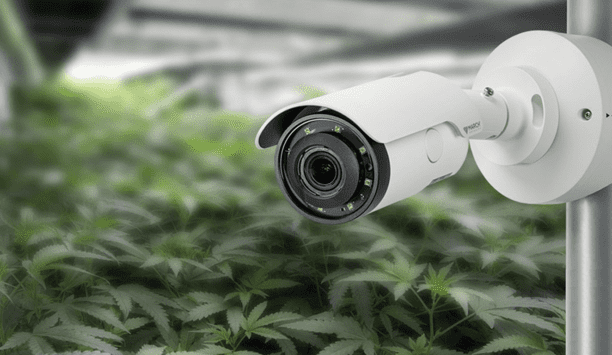
Securing your growth with video surveillance
Download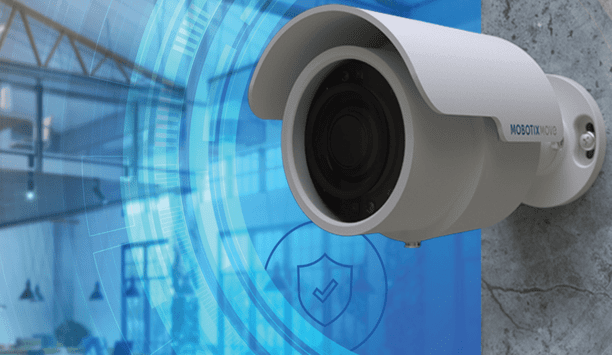
Intelligent video security solutions
Download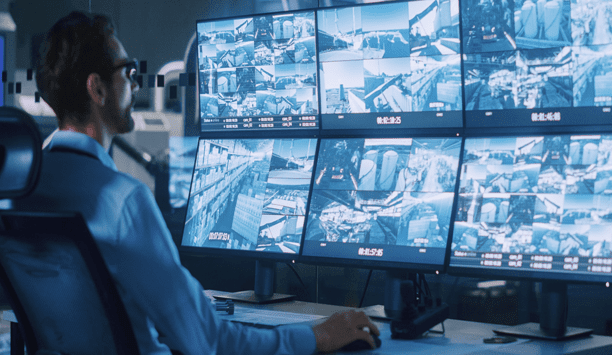
5 must-haves for seamless VMS connectivity
Download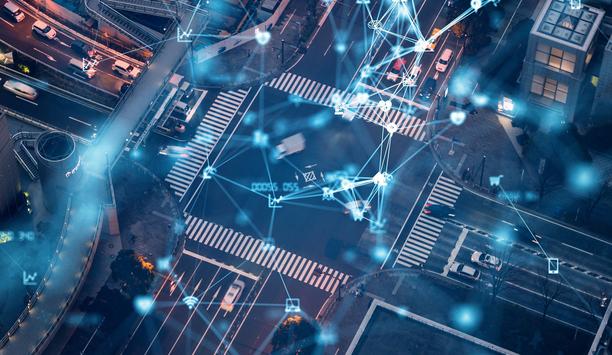
Securing unmanned infrastructure at the network edge
Download
Market Report: Cannabis at a glance
DownloadSinaloa, Mexico: Connected cities are safer cities
Download
Thermal cameras: Can they accurately detect body temperatures?
Download

Videos
Outdoor video surveillance: Manufacturers & Suppliers
- Bosch Outdoor video surveillance
- Hikvision Outdoor video surveillance
- AV Costar Outdoor video surveillance
- Axis Communications Outdoor video surveillance
- Illustra Outdoor video surveillance
- Dahua Technology Outdoor video surveillance
- Messoa Outdoor video surveillance
- eneo Outdoor video surveillance
- Hanwha Vision Outdoor video surveillance
- Vicon Outdoor video surveillance
- UltraView Outdoor video surveillance
- Bolide Outdoor video surveillance
- LILIN Outdoor video surveillance
- LTV Europe Outdoor video surveillance
- FLIR Systems Outdoor video surveillance
- Sony Outdoor video surveillance
- VIVOTEK Outdoor video surveillance
- Videotec Outdoor video surveillance
- Avigilon Outdoor video surveillance
- Eagle Eye Networks Outdoor video surveillance

The ultimate guide to mastering key control
Download
Using artificial intelligence (AI) to automate physical security systems
Download
A modern guide to data loss prevention
Download
7 proven solutions for law enforcement key control and asset management
Download
The truth behind 9 mobile access myths
Download